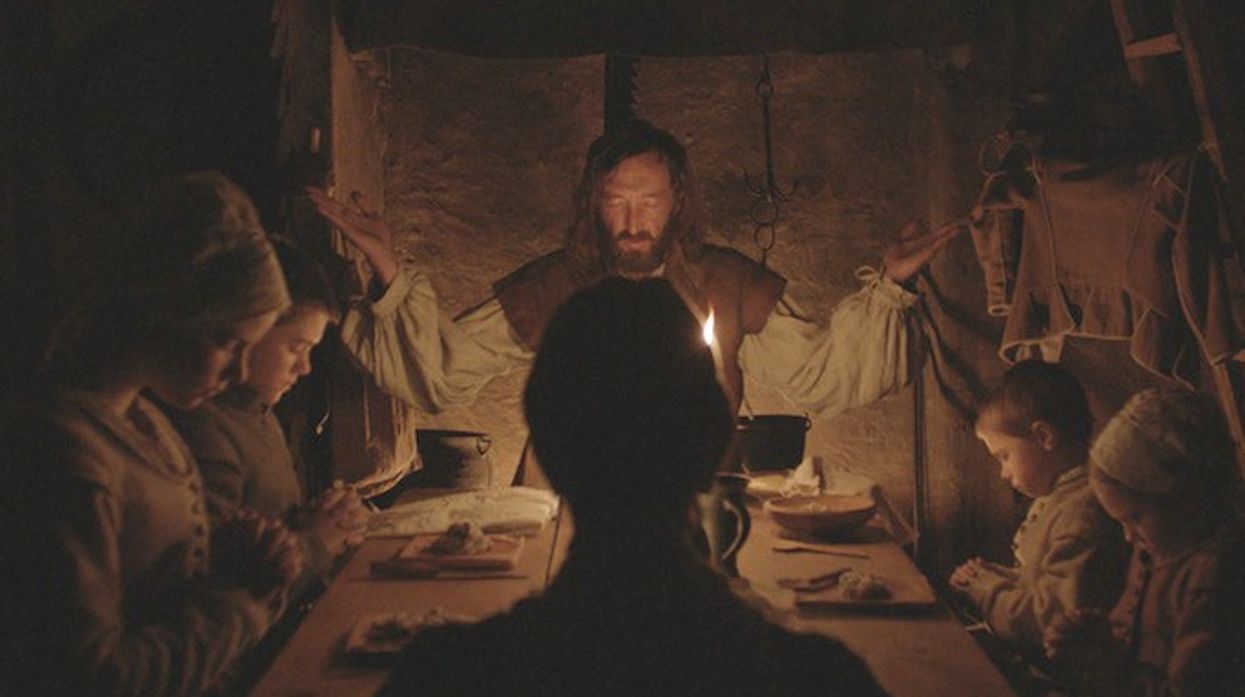How 'The Witch' Used Older Tech to Evoke Its Naturalistic Look
Modern technology can’t always give period films that perfect old-timey look.

Robert Eggers is known for writing and directing historical films like The Lighthouse and his big-budget epic The Northman. Eggers is a bit of a history nut and heavily researches each of his projects so he and his crew can accurately depict the story he wants to tell. For Eggers, the devil is always in the details, making his film rich with depth and layered storytelling that asks us to return to them time and time again.
This trend started with Eggers’ debut film, The Witch, which preys upon our culturally rooted puritanical fears that something is waiting in the darkness. The film is a historically frightening film that plays on the famous folklore icons of Western culture.
The Witch masterfully shows the writer/director's dedication to history not only in the story but through the technology he and his cinematographer Jarin Blaschke used to achieve the natural, low-light look. In a 2016 interview with Moviemaker, Eggers and Blaschke described some of the techs they used, including 75-year-old lenses, their lighting ethos, and other details about the film’s unique visual language.

The "European Widescreen" Aspect Ratio
Up until 1953, most films were shot and presented in the Academy Standard aspect ratio of 1.37:1. When the Roman epic The Robe was released, introducing CinemaScope to the masses, aspect ratios began to gradually widen.
European films, however, stuck with the 1.66:1 aspect ratio.
Eggers and Blaschke chose the European aspect ratio for a specific reason. Shooting within a narrower frame than usual made for a taller-looking landscape, giving trees a towering, inescapable feel. According to Blaschke, the trees also emphasized a vertical, up-and-down motif that looked up toward Heaven and stretched down toward Hell.

The Best Lenses for Folk Horror
Blaschke wanted to give The Witch a dreamier, more natural quality. To achieve this, the DP visited Panavision and looked through the studio’s older tech, searching for a unique lens that could evoke that gloomy naturalism of folk horror.
Blaschke ended up finding some Cooke lenses from the 1940s. The lenses were meant to be affixed to an ARRI Alexa Plus digital camera, but Blaschke described the lenses to be more convex than most lenses.
“[Cooke lenses] give a very round quality. It almost looked like a crystal ball—it smeared out-of-focus areas in the concerns, [so] it was like looking through a porthole into the past,” Blaschke told Moviemaker.
Even though The Witch was shot digitally, the DP used different types of old lenses originally intended for different film stocks to achieve a particular look, including Bausch & Lomb Super Baltar lenses and Panavision Super Speed lenses.
Blaschke says that he shot on 25mm, 32mm, 40mm, and 50mm lenses, giving him the ability to achieve different depths of field, affect the bokeh in a shot, sharpen or soften an image, and allow in different amounts of light, which is helpful when shooting in dark or daylit locations.

Using Natural and Authentic Lighting
Eggers and Blaschke wanted to use historical lighting in the film, which means embracing natural lighting. Movies shot entirely with natural light are relatively rare, with the vast majority of filmmakers not even considering it as an option, but Eggers and Blaschke wanted to embrace authentic and rustic realism.
In the Moviemaker article, Eggers reveals that he imported period-authentic beeswax candles from Alaska for on-camera lighting and used tea lights off-camera to offer an eerie, glowing haze to the image.
Blaschke said that it was the crew’s responsibility to use authentic lighting and techniques to enhance the story for the actors and the audience. For them to “then put out a Kino Flo would just be a betrayal,” Blaschke told Moviemaker.
While Eggers and his DP tried to stay as accurate as they could to the time period, certain moviemaking logistics had to be considered to make certain scenes work.

Eggers confessed to BFI in 2016 that one of his few concessions was allowing the cottage windows to be a third larger than they were in real life to accommodate enough natural light to shoot interior scenes.
The Witch is simplistic and truthful in its visual language. By using older technology, Eggers and Blaschke were able to create a gloomy Northeastern atmosphere that highlights the wrath of the Earth.
Let us know what you think about the cinematography of The Witch in the comments!
Source: Moviemaker











